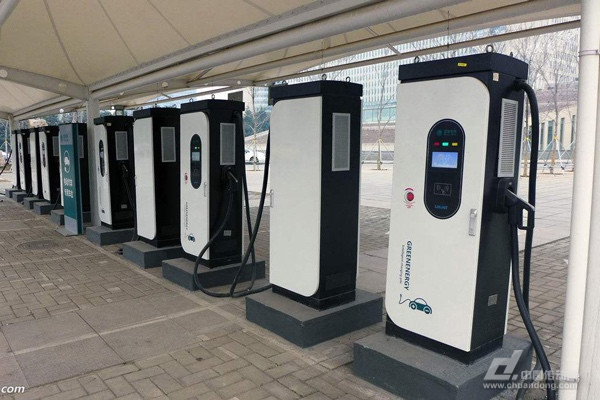On January 11th, the China Electric Vehicle Charger Infrastructure Promotion Alliance released data showing that the national public charging infrastructure (reported by member companies within the alliance) has reached 213,903, and the nation’s rechargeable electricity is mainly concentrated in Beijing, Tianjin, and the Yangtze River Delta. Three regions of the Pearl River Delta. According to Liu Yan, Director of the Information and Certification Department of the Charging Alliance, as of 2017, it is estimated that the number of new energy vehicles in the country is about 1.729 million, and that of pure electric passenger cars is about 801,000. The nation’s public charging infrastructure (reported by member companies within the alliance) has 213,903 inhabitants, including 86,469 AC charging infrastructures, 61,275 DC charging infrastructures, and 66,059 AC and DC integrated charging infrastructure. In FY 2017, the monthly average public charging infrastructure was increased by approximately 6054. In December 2017, the year-on-year increase was 51.4%. The country's privately-owned charging infrastructure was approximately 231,820, and the ratio of new energy vehicles was approximately 3. .8:1, the ratio of pure electric passenger car piles is about 1.8:1. Liu Yu pointed out that the number of domestic relatively large-scale operators (operating public types of charging facilities> 1000), among which the top four operators in terms of the number of public-type charging infrastructures are: 97,600 special calls (self-constructed + There are 42,304 State Grid Corporations, 28,521 satellites, and 14,660 Chinese Putian. The total of the top four operators accounts for 86% of the country's public charging infrastructure. Judging from the provincial administrative region data, the top 10 publicly-owned charging infrastructures in each province, district, and city are: 30,363 in Beijing, 29,262 in Guangdong, 26,314 in Shanghai, 22,075 in Jiangsu, 17,557 in Shandong, and 9909 in Anhui. There are 9,875 in Hebei, 9,866 in Zhejiang, 9,978 in Tianjin and 6,214 in Hubei. According to the data of the vehicle piles, as of 2017, 291848 vehicle sample piles were sampled by the vehicle companies within the alliance, 231,820 of which were installed and installed in private, and the overall construction rate was 79.43%. The construction ratio is 20.57% (including 9.79% when the group purchases passenger cars as special vehicles such as taxis and does not need to install charging piles with the car). In July 2016, the four ministries and commissions of the country jointly issued the “Notice of Accelerating the Infrastructure Construction of Electric Vehicles in Residential Areas to Accelerate the Construction of Electric Vehicles (No. 1611, No. 1611, 2016). Privately-purchased electric vehicles were equipped with charging piles for the construction of electric vehicles. The rate rose from 77% in July 2016 to 88% in December 2017. On the other hand, sampled vehicle piles follow the information data of vehicle manufacturers in the alliance (BYD, BAIC, SAIC, JAC, Tesla, Chang'an, Geely, Chery, Dongfeng Electric, Dongfeng Nissan, Guangzhou Automobile, FAW, Zhidou). Due to "group users self-built piles", the proportion of charging piles that could not be built was 9.79%. Due to "there is no fixed parking space in the place of residence," the proportion of charging piles that could not be built was 1.87%, because " There was no fixed parking space in the work area and the proportion of charging piles that could not be built was 1.06%. Due to the “non-coordination of residential properties,†the proportion of charging piles that could not be built was 0.65%, due to the “residence reportâ€. It is difficult to install and connect electricity, and the proportion of charging piles that cannot be built is 0.25%. From the charge data, in December 2017, the nation’s rechargeable electricity was mainly concentrated in the three regions of the Beijing-Tianjin-Hebei region, the Yangtze River Delta, and the Pearl River Delta region, of which Beijing mainly used private passenger vehicles; Guangdong, Shandong, Jiangsu, Henan, The flow of electricity in Hubei, Shanghai, and Fujian is mainly based on buses and other special vehicles, supplemented by passenger cars. The flow of electricity in Shanxi is mainly based on taxis, supplemented by passenger cars. Among them, 21.855 million kwh in Guangdong, 18.604 million kwh in Shanxi, 7.929 million kwh in Beijing, 7.442 million kwh in Shandong, 6.906 million kwh in Jiangsu, and 571 in Henan 0,000 kilowatt-hours, 5.605 million kilowatt-hours in Hubei, 4.849 million kwh in Shanghai and 3.980 million kwh in Fujian. Author: Zhang ripples
Features
â—† Designed For Water and Dust Tight(IP67)
â—† Customized Designs
Sealed Micro Switch,Electronic Micro Switch,Micro Switches For Sale,Sealed Micro Limit Switch Ningbo Jialin Electronics Co.,Ltd , https://www.donghai-switch.com
â—† UL&ENEC&CQC Safety Approvals
â—† Long life & high reliability
â—† Variety of Levers
â—† Wide Range of wiring Terminals
â—† Wide used in Automotive Electronics,Appliance and Industrial Control etc.